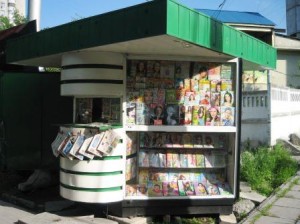
Kyrgyz media under renewed pressure
Following a period of relative stability, the media in Kyrgyzstan now finds itself under renewed pressure as the country’s presidential elections are coming up
After the overthrow of President Kurmanbek Bakiyev last April the Kyrgyz media has been struggling with a fragmented and increasingly unstable political environment. With the country’s presidential elections slated for October the coming weeks and months could prove increasingly difficult.
A fragmented political situation
 After the revolution’s ousting of President Bakiyev opposition leaders formed a new interim government. But according to former IMS Media Advisor in Kyrgyzstan Kristin Fjæstad, much of the Kyrgyz public feels the parliament does not take the responsibility it should.
After the revolution’s ousting of President Bakiyev opposition leaders formed a new interim government. But according to former IMS Media Advisor in Kyrgyzstan Kristin Fjæstad, much of the Kyrgyz public feels the parliament does not take the responsibility it should.
– “People see it as a malfunctioning system. The authority has been dispersed, but the people do not see the positive side to this. Instead they focus on the lack of responsibility and fragmentation of the political environment. The current coalition seems very fragile. With a strong and powerful president they feel they at least have someone to blame when things aren’t working. At the moment they don’t know who to turn to”, says Fjæstad.
Resulting in a prevalent lack of national strategy the fragmentation is highlighted by multiple political factions fighting for determination, dominance and representation.
Increased pressure on the media
The political instability has had a direct influence on the pressure on the media.
This was illustrated by a recent debate in the Kyrgyz parliament on a new public service law. If adopted the new law would mean a shift in influence on public service media from civil society to that of the parliament and future president.
According to Kristin Fjæstad some political parties are interested in the new law because it would give them an increased control of the public service channels ahead of the presidential elections.
“I think the political factions have already positioned themselves according to the big newspapers to gain influence on the media’s coverage of them in the election period”, says Fjæstad.
Tense ethnic situation in the south
Looking beyond the proposed public service law, the situation for media and journalists in other parts of the country did generally stabilise after the revolution according to Fjæstad. But in the southern part of the country the working conditions for journalists remain extremely difficult.
With violent clashes occurring between ethnic Kyrgyz and Uzbeks in the cities of Osh in June 2010 in the aftermath of the ouster of President Bakiyev, the media in the south found itself in a tense situation marked by a strongly polarised divide between the two ethnic groups.
This was underlined by the closure of the two TV-stations Osh TV and Mezon TV, which left the south without any Uzbek-language media.
– “This is quite a substantial problem when you have approximately 50% Uzbeks in Osh. It is a challenge when such a large part of the population does not have access to any media in their own language”, says Fjæstad.
According to Fjæstad most journalists of Uzbek or mixed ethnicity have either fled the area or ceased working as journalists, fearful of repression and harassment:
– “Coupled with the general lack of political will and capacity to carry out a proper reconciliation process it makes the situation for any independent media, both Kyrgyz and Uzbek-language extremely difficult.”
IMS has been working in Kyrgyzstan for the past nine years as part of a regional programme to support a peaceful transformation of the ongoing conflicts in the Central Asian region by building awareness and promoting dialogue through the media.




